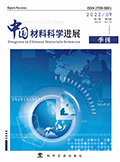医用NiTi合金与WE43镁合金双光束激光焊接接头组织及性能
Microstructure and Properties of Dual-beam Laser Welded Joints of Medical NiTi Alloy and WE43 Magnesium Alloy
摘要
目前的介入支架多采用同种金属材料制成, 难以实现局部区域的可控性降解需求, 其不可降解的锚定端易导致血管内膜损伤及远端新发破口 (dSINE) 等长期并发症。本文利用同轴连续脉冲双光束激光器将医用NiTi合金和WE43镁合金进行了焊接。对单束和双束激光焊接接头的焊缝形貌、显微组织、抗拉强度和断口进行了对比分析, 并研究了脉冲电流为接头的影响, 最后对表征了焊接后的耐蚀性。结果表示, 双束激光获得的接头外观和机械强度均优于单束激光。双束激光焊接NiTi/WE43搭接接头的最大抗拉强度到达到141. 6MPa。NiTi和WE43的连接受脉冲电流的影响, 主要是通过元素的扩散来实现的, 并且扩散层厚度随激光功率的增加先增大后减小。由于截面缺陷和Mg的溶解, 焊接后的接头处的耐蚀性较母材有所降低。NiTi保留了韧性断裂, 而WE43表现出热循环诱导的热影响区晶粒粗化的脆韧性混合断裂。
Abstract
Current mose interventional stents are made of the same metal material, which makes it difficult to achieve controllable degradation in local areas. Their non degradable anchoring end can easily lead to vascular intimal damage and long-term complications such as distal rupture (dSINE) . This study implemented coaxial dual-beam pulsed laser welding to join medical-grade NiTi alloy with WE43 magnesium alloy. A comparative analysis was conducted on weld morphology, microstructure, tensile strength, and fracture surfaces between single-beam and dual-beam laser-welded joints, with additional investigation into the effects of pulsed current parameters on interfacial characteristics. The corrosion resistance of welded joints was subsequently evaluated. Results demonstrated that dual-beam laser welding produced joints with superior surface integrity and mechanical performance compared to single-beam processing. The maximum tensile strength of dual-beam welded NiTi/WE43 lap joints reached 141. 6 MPa. The bonding mechanism between NiTi and WE43 was primarily governed by elemental interdiffusion influenced by pulsed current parameters, with diffusion layer thickness initially increasing and subsequently decreasing with elevated laser power. Corrosion resistance at the joint interface was reduced relative to base materials due to interfacial defects and preferential Mg dissolution. Fractographic analysis revealed preserved ductile fracture characteristics in NiTi, whereas WE43 exhibited a brittle-ductile mixed fracture mode attributed to thermally induced grain coarsening in the heat-affected zone.
作者
张春旭1 , 徐畅2 , 王红阳1 , 齐民1 , 庄熙晶2 , 董旭峰1,2,*
Author
ZHANG Chunxu1 , XU Chang2 , WANG Hongyang1 , QI Min1 , ZHUANG Xijing2 , DONG Xufeng1,2,*
所在单位
1. 大连理工大学材料科学与工程学院, 大连 116024
Company
1. School of Materials Science and Engineering, Dalian University of Technology, Dalian 116024, China
基金项目
国家重点研发计划项目(批准号:2023YFB3810100)、大连市科技创新计划项目(批准号:2023JJ12SN031)、中央高校基本科研业务费专项资金项目(批准号:2023YGZD03和DUT24LK002)和大连市医药卫生科研业务费专项资金项目(批准号:2311003)资助。
参考文献
[1] Patel S K. A review on NiTi alloys for biomedical applications and their biocompatibility[J]. Mater Today: Proceedings, 2020: 5548-5551.
引用本文
张春旭, 徐畅, 王红阳, 等. 医用NiTi合金与WE43镁合金双光束激光焊接接头组织及性能[J]. 中国材料科学进展, 2025, 4(3): 54-65.
Citation
ZHANG Chunxu, XU Chang, WANG Hongyang, et al. Microstructure and properties of dualbeam laser welded joints of medical NiTi Alloy and WE43 Magnesium Alloy[J]. Progress in Chinese Materials Sciences, 2025, 4(3): 54-65.

